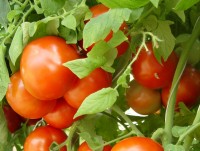Production & Management-Tomatoes
go.ncsu.edu/readext?183729
en Español / em Português
El inglés es el idioma de control de esta página. En la medida en que haya algún conflicto entre la traducción al inglés y la traducción, el inglés prevalece.
Al hacer clic en el enlace de traducción se activa un servicio de traducción gratuito para convertir la página al español. Al igual que con cualquier traducción por Internet, la conversión no es sensible al contexto y puede que no traduzca el texto en su significado original. NC State Extension no garantiza la exactitud del texto traducido. Por favor, tenga en cuenta que algunas aplicaciones y/o servicios pueden no funcionar como se espera cuando se traducen.
Português
Inglês é o idioma de controle desta página. Na medida que haja algum conflito entre o texto original em Inglês e a tradução, o Inglês prevalece.
Ao clicar no link de tradução, um serviço gratuito de tradução será ativado para converter a página para o Português. Como em qualquer tradução pela internet, a conversão não é sensivel ao contexto e pode não ocorrer a tradução para o significado orginal. O serviço de Extensão da Carolina do Norte (NC State Extension) não garante a exatidão do texto traduzido. Por favor, observe que algumas funções ou serviços podem não funcionar como esperado após a tradução.
English
English is the controlling language of this page. To the extent there is any conflict between the English text and the translation, English controls.
Clicking on the translation link activates a free translation service to convert the page to Spanish. As with any Internet translation, the conversion is not context-sensitive and may not translate the text to its original meaning. NC State Extension does not guarantee the accuracy of the translated text. Please note that some applications and/or services may not function as expected when translated.
Collapse ▲ North Carolina ranks 7th in the nation in tomato production, growing more than one million pounds annually, according to the N.C. Department of Agriculture & Consumer Services’ 2007 Census of Agriculture. That’s a lot of tomatoes!
North Carolina ranks 7th in the nation in tomato production, growing more than one million pounds annually, according to the N.C. Department of Agriculture & Consumer Services’ 2007 Census of Agriculture. That’s a lot of tomatoes!
In order to grow delicious, juicy tomatoes at that rate, growers must give special consideration to the production practices implemented, including pre-plant considerations, trellising/staking, integrated pest management (IPM) and postharvest handling. The resources in this production section will help growers produce quality tomatoes that best suit their growing conditions and operations.
In addition to growing a quality crop, farmers must be adept at business management. Business management includes not only financial responsibility, but also marketing, food safety and risk management. A farmer might produce a bumper crop of tomatoes, but if any one of these management areas is overlooked, the profit potential for the season will not be fully realized.
Plant Tissue Analysis
NC Department of Agriculture & Consumer Services has created a website that hosts resources on how to collect and submit plant tissues for analysis. Plant tissue analysis can indicate whether plants contain the concentrations of essential nutrients necessary for optimum growth. Results help growers monitor nutrient uptake, correct deficiencies before they reach a critical stage and, for some crops, time harvest appropriately.
Resources
This section will be updated as more materials become available. Be sure to check back often for more information.
Reviewed 8/22/2022


